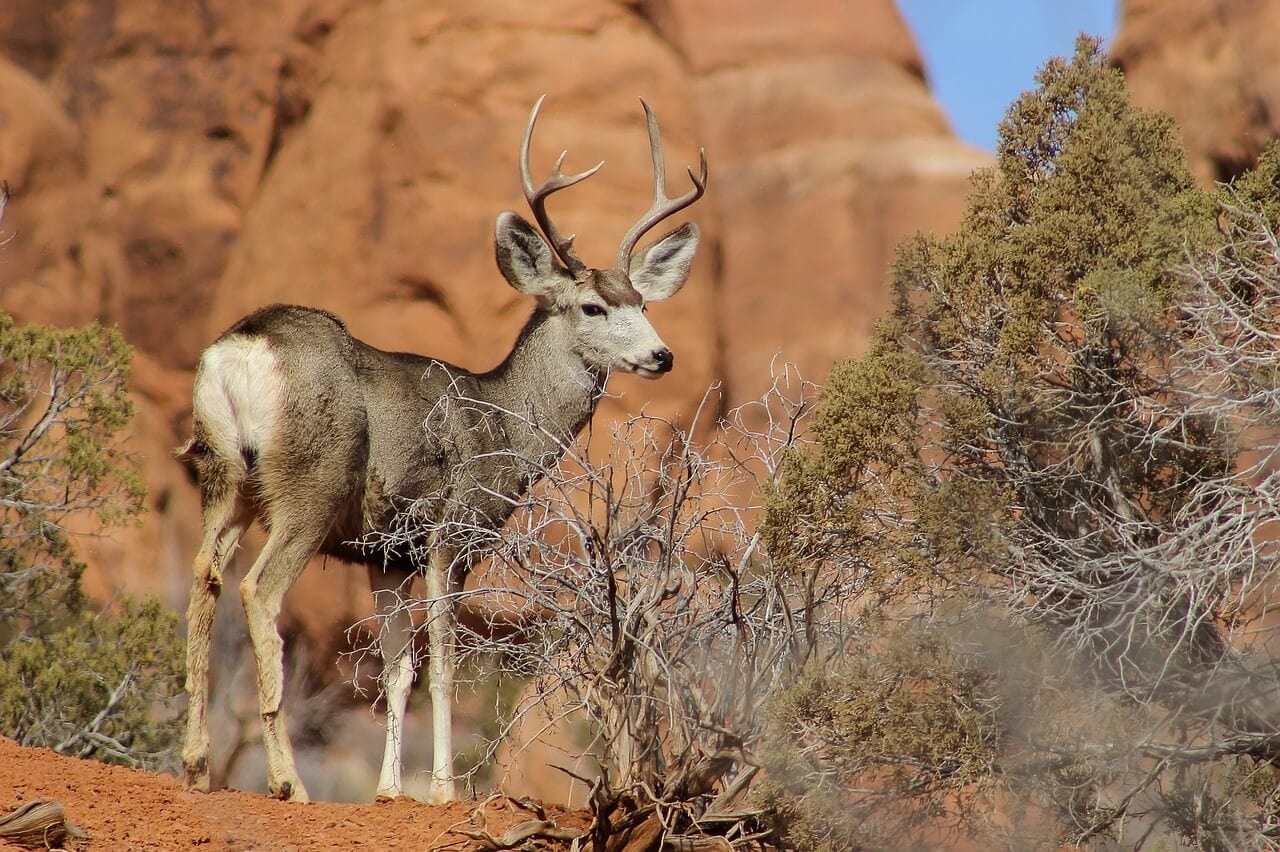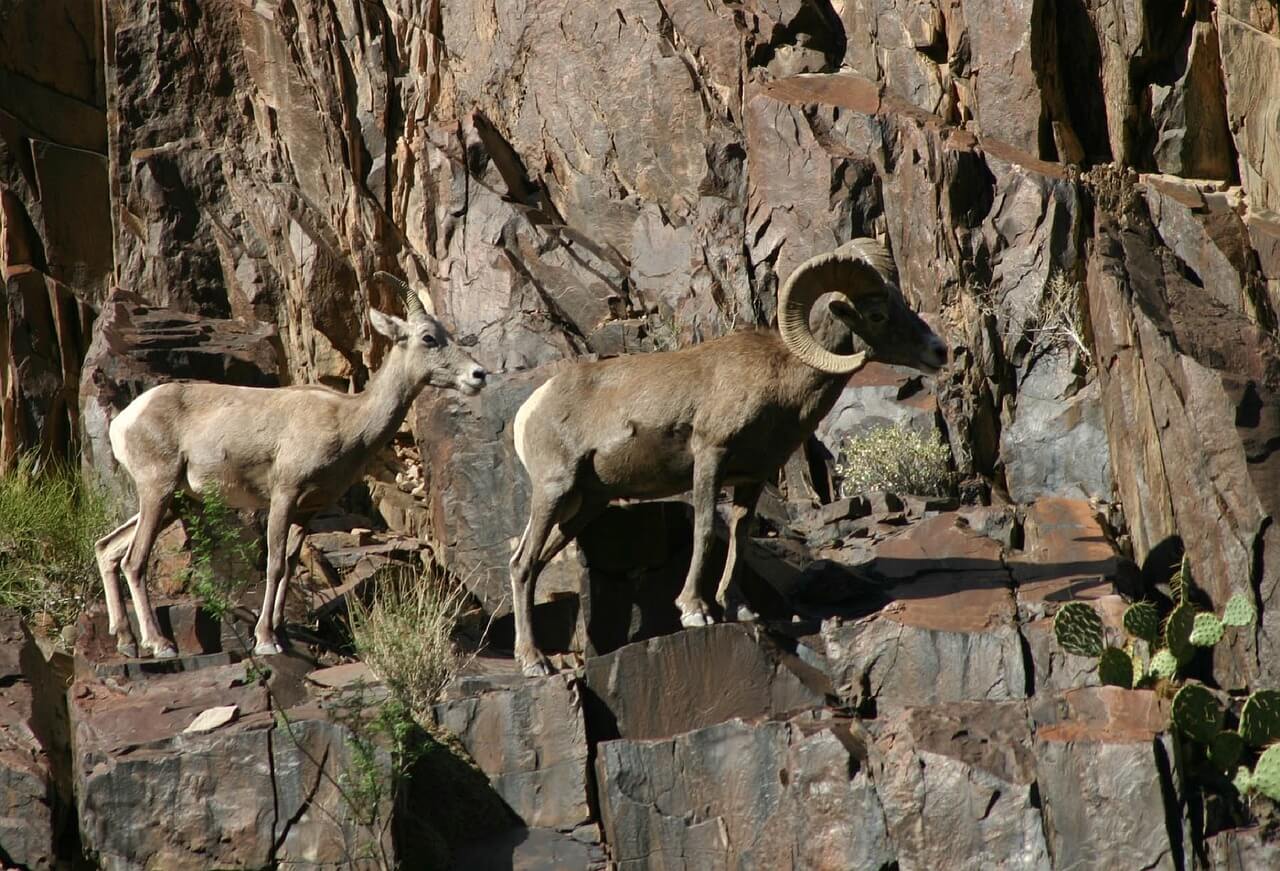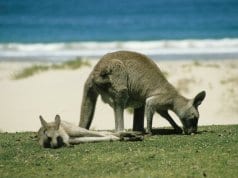Located in the southwestern corner of Utah, Zion National Park is a unique place. It has captivated visitors since it first received protected status in 1919. The park sits at the confluence of three different ecosystems, including the Mojave Desert, the Colorado Plateau, and the Great Basin, and therefore contains a variety of habitats within its borders. Because each habitat harbors a different collection of species, there are an array of wild animals that visitors can observe and enjoy.
We’ll list some of the park’s most notable wildlife species below. We’ll also share a few tips for maximizing your viewing opportunities.
The California Condor: A Rare, But Recovering Species
California condors almost went extinct, but conservation efforts have helped save these large birds.
There are a variety of incredible animals that call Zion National Park home, but few are as noteworthy as the California condor. These large birds have the widest wingspan of any North American avian. They are also one of the most massive birds in the U.S., as some reach 25 pounds or more.

California condors nearly became extinct in the 1980s, when their entire population fell to just 22 animals. However, conservation efforts have helped their numbers rebound. Scientists now suspect that 230 individuals live throughout the American Southwest. Nevertheless, their slow reproductive rate means that it will take many decades for the species to reach their historical population density.
The Reptiles of Zion National Park
Zion National Park is home to more than three dozen different reptile species.
Like many other arid regions in the southwest, Zion National Park is home to a variety of interesting reptile species. Chuckwallas and collared lizards are two of the most visible reptiles in the park. You’ll likely see dozens of these lizards basking on rocks and chasing insect prey around in the desert sunshine.

Snakes also live in Zion National Park. However, most of the snakes that inhabit the park are nocturnal, so encounters aren’t common. California kingsnakes prowl the park, seeking out their lizard and snake prey, while western rattlesnakes lie in wait for passing rodents. Coachwhips also call Zion National Park home. These swift serpents spend most of their time chasing down lizards and large insects.
Large Mammals of Zion National Park
A number of big and charismatic mammals inhabit Zion National Park.
Bighorn sheep are undoubtedly some of the most impressive animals that live inside the park. Well-adapted to the desert habitats of the region, the bighorn sheep living in Zion National Park have longer, thinner legs and shorter coats than their relatives living in the Rocky Mountains do.

Elk and mule deer also live in Zion National Park. Both are impressive animals, but the elk reach much larger sizes than the deer. This makes them more popular with wildlife lovers. Just be sure that you don’t get too close to either species. They’re both peaceful herbivores when given plenty of room, but they may become aggressive if they feel threatened.
Mountain Lions and Other Predators of the Park
Like all other national parks, Zion is home to several predatory species.
Zion National Park is home to an impressive array of mammalian predators. This includes several small species, such as raccoons, long-tailed weasels and skunks. Several medium-sized predators, such as foxes, coyotes and badgers, also inhabit the park. Most of these predators feed on a combination of rodents, birds, eggs, snakes, lizards and invertebrates.

Two feline predators – bobcats and mountain lions — also live in the park. Bobcats are the smaller and more secretive of the two, but mountain lions also tend to lead a reclusive existence. Both cats feed on similar prey, including rabbits and large birds, but mountain lions will also attack mule deer from time to time.
Zion National Park is also home to black bears, although few visitors get the chance to see these beautiful creatures during a visit. Grizzly bears formerly inhabited the park, but they were eventually extirpated by humans living in the area.
Wildlife Viewing Tips: Making the Most of Your Visit
Zion National Park provides visitors with fantastic opportunities to see wildlife.
Zion National Park is a great place to see and photograph a variety of wild animals. However, many of the park’s resident species are shy, and you’ll have to do everything you can to help increase the odds of seeing as many as possible. Just follow the tips listed below, and you should improve your chances greatly.
- Bring binoculars to spot animals at a distance. Because much of Zion National Park is comprised of wide-open habitats, the animals will often be able to spot you from quite far away. Accordingly, you’ll want to bring a good pair of binoculars to help even the playing field and give you a better chance of spotting them before they flee.
- Take advantage of moderate weather. The weather at Zion National Park is often rather extreme, which forces animals to take shelter. But when unseasonably cool or warm weather occurs, everything changes. Animals use these opportunities to forage for food, water and mates. Take advantage of these brief weather windows and you’ll likely find it easier to spot exciting species.
- Plan your trip for the spring if birds are high on your list. You can certainly find plenty of birds in Zion National Park during all four seasons, but many of the songbirds that call the park home are most active during the spring. By visiting during this time of year, you’ll have the best chance of seeing these birds sing for mates, prepare nests and collect food for their young.

Tell Us About Your Experiences!
Because Zion National Park contains a variety of different habitats, it is one of the best parks in the world for animal-lovers to visit. A short hike is all that separates deserts from lush valleys or rocky outcroppings from pristine rivers. You’d often find it necessary to visit several different parks to see so many different species. However, Zion National Park allows you to do so over the course of an afternoon.
Have you ever visited Zion National Park? We’d love to hear about your experiences. Tell us all about the wildlife you observed and your favorite things about the park in the comments below.














![Red Angus Closeup of a beautiful Red Angus cowPhoto by: U.S. Department of Agriculture [pubic domain]https://creativecommons.org/licenses/by/2.0/](https://animals.net/wp-content/uploads/2020/03/Red-Angus-4-100x75.jpg)

